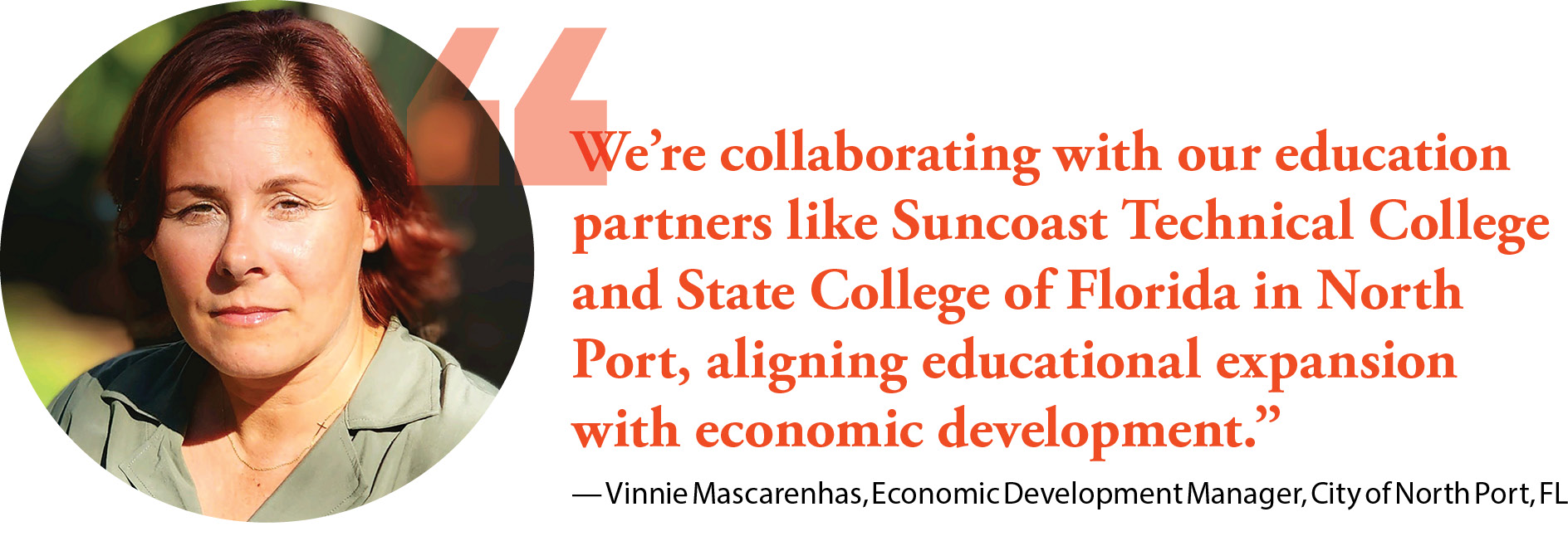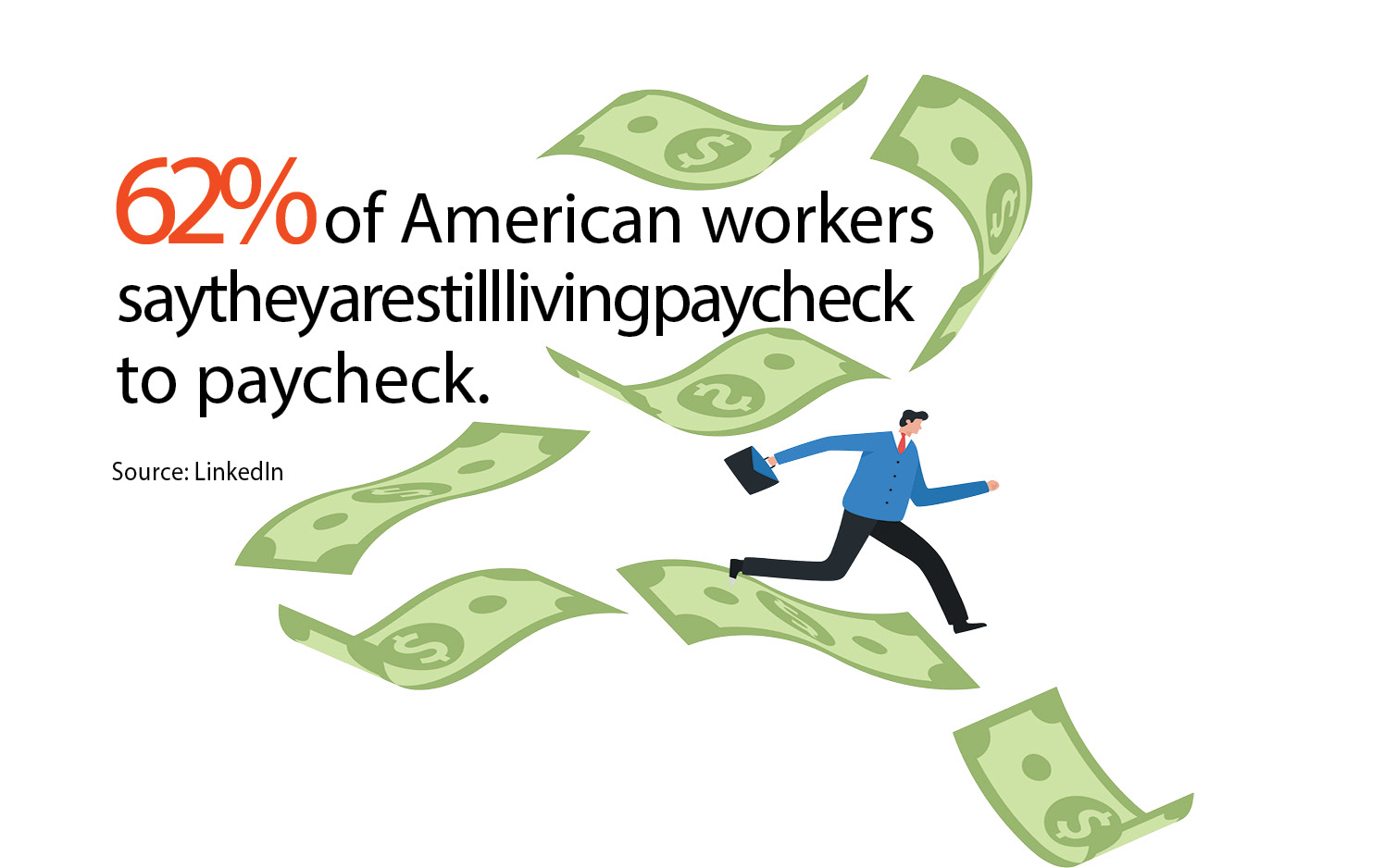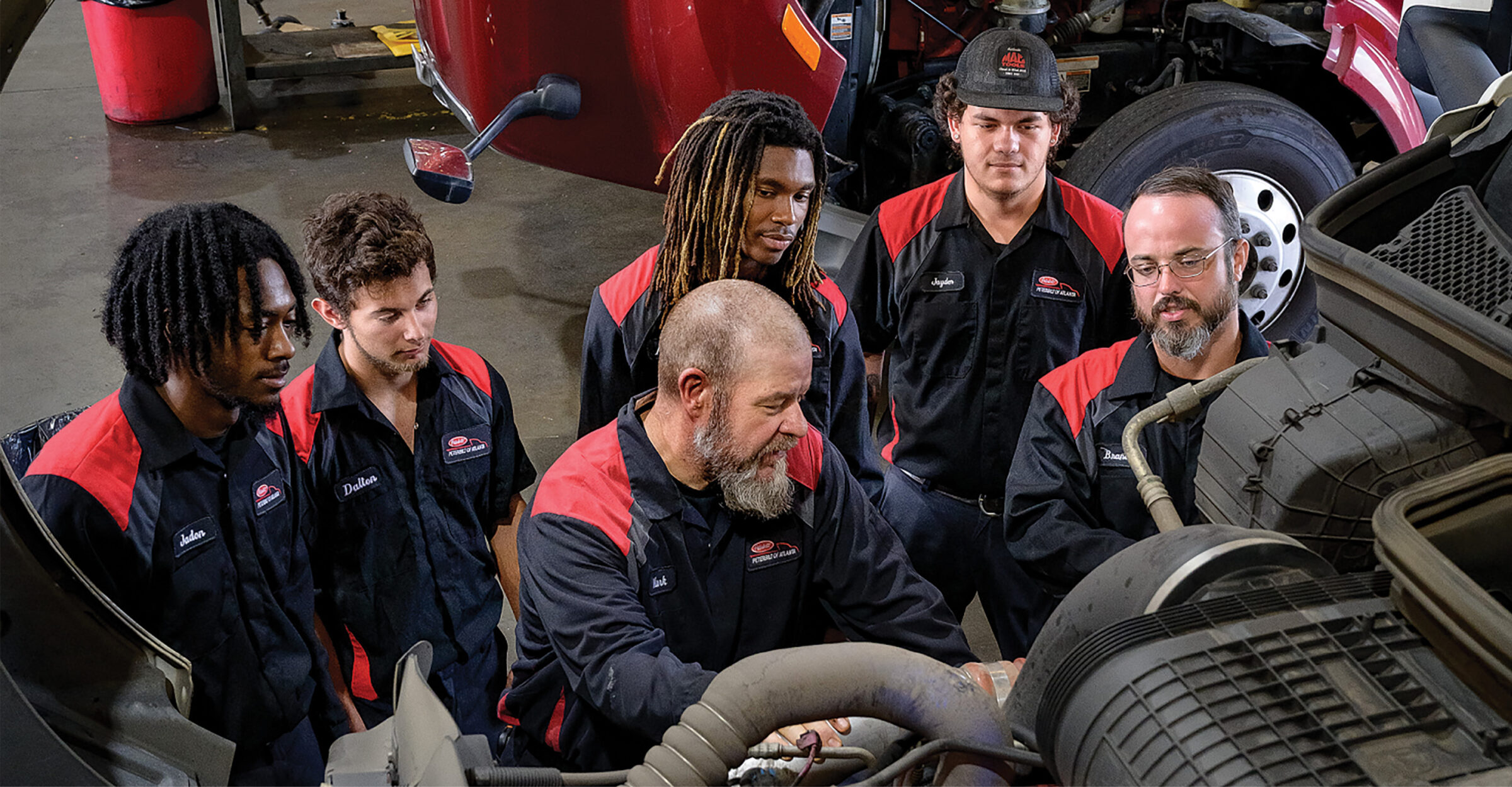If you thought your daily to-do list as an employer was packed already, think again. For the foreseeable future, a convergence of demographic and socioeconomic factors will make finding, hiring and keeping the best workers harder than ever.
We surveyed leaders in economics, workforce development, economic development and site selection consulting to produce a Top 10 list of workforce challenges. In no particular order, here they are:
America’s Labor Shortage
Best-selling author, speaker and economist Peter Zeihan predicts that “we are entering a protracted period of increasing labor shortages and increasing labor demand. Anything workers say they need must be on the table.”
A lower birth rate, retiring Baby Boomers and a decline in workforce participation combine to spell trouble for certain industries that are projected otherwise to grow over the next decade, according to a comprehensive labor assessment by the U.S. Bureau of Labor Statistics.
Everywhere we turned, community leaders echoed this sentiment. Rod Crider, president and CEO of the Rowan Economic Development Council in Salisbury, North Carolina, says, “While there is less urgency than a year ago, employers still report having issues with employer attraction and retention. Wages and benefits are rising as a result, and there is a much stronger emphasis on culture.” Crider adds that Rowan County will need 20,000 new employees to fill openings created by new business growth over the next five to 10 years.
Mark Litten, vice president of economic development for the Putnam County Chamber of Commerce in Palatka, Florida, says that with a countywide unemployment rate of 3.2% and a statewide jobless rate of 2.6%, “we don’t have many unemployed workers.”
Jason El Koubi, president and CEO of the Virginia Economic Development Partnership, says, “There is a significant and growing labor shortage, with too many job openings and not enough qualified individuals to fill them. This shortage is driven by factors such as America’s demographic trends and a limited amount of legal immigration.”
Access to Affordable Child Care
Since the advent of the global pandemic in early 2020, child care has become more scarce and less affordable, according to the agencies that track child-care facilities and fees nationwide. The average child-care payment has risen 32% since 2019, outpacing inflation, the Bank of America Institute reports.
This has delayed the return to the workforce of many adults with children. Mothers with children at home have been the hardest hit by this trend as they struggle to find adequate, affordable child-care resources within a reasonable commute. Plus, due to low wages, many child-care workers have left that profession to pursue other, better-paying jobs.
Affordable Workforce Housing
Around the country, workforce housing has increased in price and declined in availability. Green Street reports that shares of U.S. single-family housing REITs (Real Estate Investment Trusts) now trade at a 20% discount to their asset value, while UBS reports that 61% of all U.S. home mortgages now have rates below 4%, meaning homeowners will be reluctant to sell to change jobs. The reason? Home mortgage rates in the U.S. have reached a 25-year high.

Various local jurisdictions face their own unique housing challenges too. Vinnie Mascarenhas, economic development manager for the City of North Port, Florida, in Sarasota County, notes that “housing presents a workforce challenge that is prevalent in Southwest Florida. The pre-platted nature of North Port further exacerbates this challenge. In response, our city is rewriting our Unified Land Development Code (ULDC). One aspect of this historic rewrite is to create a greater variety of housing options, beyond the overwhelming number of single-family homes, to accommodate our growing workforce needs.”
Automation, AI and Robotics
AI and robots may not be coming for all our jobs just yet, but they are dictating another trend in the workplace: rising demand for people with the technical skills required to handle and service AI, automation and robotics.
“We need more maintenance people with experience in robotics, conveyors, sensors and attachments for wiring,” says Rodger Brown, executive director of Georgia Quick Start. “Everything is computer-controlled now.”
If the new jobs are in semiconductor manufacturing, “then we need people who are skilled and sensitive to science,” he adds. “We now make products that never need to be touched by human hands. Quality control teams are important today; and everyone in the modern workplace must embrace the culture of quality. Even forklift trucks are automated.”
Brown has toured the most advanced plants in the electric vehicle manufacturing industry in South Korea and he’s seen firsthand the level of automation that is coming for American workers. “Whether it’s EVs or lithium-ion batteries or polymer materials, it’s all rapidly merging in the fundamental technologies,” he notes. “We have an immediate need for more skilled equipment operators because most of this work is automated.”
Worker Upskilling and Retraining
However you slice it, American workers need more training. Hyundai, which is going to hire 8,000 new workers in South Georgia, “wants people who are motivated, teachable and willing to work with others,” says Brown. “Companies need workers who are eager to be trained and learn new skills and new ways of doing things. If workers are willing to do that, they may one day find themselves among the first to earn promotion to leadership management roles.”
Most occupations today require not a four-year college degree but rather cutting-edge technical skills that were invented in the last few years. “Germany has an advantage over us because they’ve been rewarding skilled apprenticeships and trades for the past 100 years; they still emphasize those things today,” Brown adds. “We need to start doing that here.”
Jason El Koubi of VEDP notes that “employers face the need to reskill their workforce due to automation and technological advancements. Many jobs require new skills, requiring investment in training and development programs to meet these demands. Virginia is supporting this workforce transition in a variety of novel ways including credential programs in high-demand industries and through the Virginia Jobs Investment Program at VEDP.”
Town vs. Gown Disconnect
When’s the last time you paid your local college or university a visit to ask them how they’re preparing your workforce? If it’s been a while, you may want to give them a call and find out.
“Nationally, there is a misalignment between the education and training programs offered and the skills demanded by the job market,” El Koubi says. “This challenge underscores the importance of aligning educational curricula with industry needs as Virginia is doing with novel data capabilities that drive state policy and program choices.”
Mascarenhas of North Port says education plays a pivotal role in the city’s workforce readiness strategy: “We’re collaborating with our education partners like Suncoast Technical College (STC) and State College of Florida in North Port, aligning educational expansion with economic development. STC is planning a state-of-the-art, 20,000-square-foot building on their North Port campus. This facility will feature modern labs and classrooms designed to prepare students for careers in healthcare, construction, auto repair and electrician trades.”
Remote Work, Hybrid or RTO (return to office)?
Remember when you were told to work from home during the pandemic and didn’t have a choice about it? Well, most people now have a choice, and at least half of America’s office workers say they’d prefer to work remotely at least some of the time.
El Koubi says that changing workforce dynamics mean that Generations Y and Z have different desires and expectations compared to older generations. In many cases, the desire to achieve work-life balance is prompting workers to seek out more worker-friendly policies on remote work and hybrid arrangements. “Organizations need to adapt their workplace culture and policies to attract and retain these workers, as well as to fully leverage older workers,” he says.
STEM (Science, Technology, Engineering, and Mathematics) Education in Schools
Whatever your local high school students are attaining in their math and science scores, the globally competitive economy is pushing Americans to do better. This trend is propelling the need for more STEM, Career Technical Education (CTE) and manufacturing academies in high schools, middle schools and even elementary schools around the country.

At Central Virginia Community College in Lynchburg, Virginia, more than 1,000 high school students are currently enrolled in a CTE Academy as dual-enrollment students pursuing both a high school diploma and an associate’s degree — all while making them employable in many production jobs upon graduation.
Shorter Commutes
Since the pandemic, the average one-way commute time has declined substantially in virtually every major metro area of the country. In Atlanta, it is down 9.8%. In Washington, D.C., it is down 8.9%. San Francisco workers are spending 8.1% less time in their cars, while New Yorkers are spending 6.5% less time commuting.
The message to employers is clear: Workers have drawn a line in the sand; and the days of the hour-long commute are over. If you cannot find the workers you need within a 20-minute drive time or less, then you are probably located in the wrong place.
Income Inequality
A recent report by CNN showed that while wages are rising, the top 10% of wage earners are reaping the biggest gains. In fact, this cohort saw a jump of 22% in their earnings between 2019 and 2022. Middle-income wage earners, however, experienced only 5% gains.
The Federal Reserve Bank called this “one of the largest three-year increases in income inequality” in American history. And even with the wage increases, 62% of Americans say they are living paycheck to paycheck.
In the pages of this fourth annual Workforce Guide published by Conway Data, we go into detail on all of these dynamics. Our goal in assembling this information into one magazine is that it will help your to-do list get a lot shorter.

